Costumes & Characters
“I’ve always had passion for insects. When I was just
a kid I put rocks down around the yard near the fruit trees and I lifted them
regularly to watch the insects who had taken up residence underneath them. I
petted caterpillars and let butterflies into the house. - Liz Vandal, Costume Designer
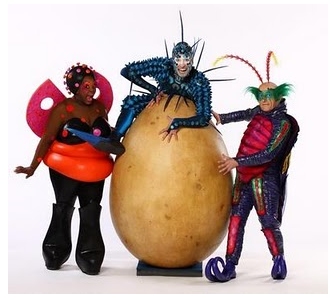 When Liz learned that OVO was inspired by insects, she immediately knew that her
style - inspired by futuristic superheroes and by suits of armour from all eras -
would perfeclty pay tribute to the majestic world of insects she so loved. Flattering
lines and an elongated, corseted look are a nod to the world of super heroes while the
segmented shells on many of the garments, which alternate between hard and soft,
echo the armor of Renaissance-era knights. Her first challenge was to imagine a way
to evoke insects without copying their actual anatomy. “The solution was to connect
with the feeling of being face to face with a spider, a cockroach, or a butterfly,”
she explains. “Then I made detailed drawings of designs that interpreted their
morphology. For example, the dragonfly’s wings are evoked by pants made of veined
lace, and the mosquito’s stinger by a ‘Mohawk’ of fine red stems. “We made the harder
decision not to use masks but rather implicate the look of the insects with face
painting. We wanted to evoke the insects, not imitate them. We looked at the beauty
of the way the insects are designed.”
When Liz learned that OVO was inspired by insects, she immediately knew that her
style - inspired by futuristic superheroes and by suits of armour from all eras -
would perfeclty pay tribute to the majestic world of insects she so loved. Flattering
lines and an elongated, corseted look are a nod to the world of super heroes while the
segmented shells on many of the garments, which alternate between hard and soft,
echo the armor of Renaissance-era knights. Her first challenge was to imagine a way
to evoke insects without copying their actual anatomy. “The solution was to connect
with the feeling of being face to face with a spider, a cockroach, or a butterfly,”
she explains. “Then I made detailed drawings of designs that interpreted their
morphology. For example, the dragonfly’s wings are evoked by pants made of veined
lace, and the mosquito’s stinger by a ‘Mohawk’ of fine red stems. “We made the harder
decision not to use masks but rather implicate the look of the insects with face
painting. We wanted to evoke the insects, not imitate them. We looked at the beauty
of the way the insects are designed.”
The idea of sectioned bodies takes on metaphorical significance, as the word
insecta itself means "in sections". This revelation consolidated her approach.
Liz drew on the wealth of experience and know-how of Cirque’s costume shop to put it
all together. “Together we developed techniques of pleating fabrics to provide
three-dimensional muscle, volumes and shells," she says. "The result is a sort of
organic origami." This approach has enabled the artisans to sublimate the costumes
into lyrical forms and imbue them with an evocative dimension.
The most obvious examples of that are the crickets’ costumes. In their sexy,
vivid, vibrant costumes, the ten crickets are the show's totem insects. “The quantity
of them is impressive,” says Vandal. “Their legs represent a metaphor for jumping,
even though they are actually walking or dancing, and they are the closest to the
reality of the actual insect.”They have detachable legs, which multiplies the number
of limbs exponentially to give the impression of a veritable infestation. The initial
cricket costumes required 75 hours of work each because of their complexity and the
need to give them rigidity while maintaining the flexibility and expandability of the
material. "The team also explored the textures of wings and shells using the
sublimation technique to poeticize them and give them an evocative texture."
The crickets’ legs, which are attached to the performers at the belt and ankle
and have an internal pulley system to facilitate their movement, are actually
detachable for the acrobatic numbers. “We didn’t want them to have to change their
costumes,” Vandal explains, noting that the first layer is a leotard, close to the
body for stretch, then built upon using what she refers to as “organic origami,” or
permanently pleated fabric, much of which has been plastic-coated for a “hard shell
look,” like the carapace of these arthropods.
|
Liz and her team in the costume shop have exploited the permanent pleating
technique developed by Japanese designer Issey Miyake, which gives certain rigidity
to material and creates an organic effect. "We pushed this technique even further",
she says, "by printing on colored materials, sublimation and eroding the fabric not
only to stiffen it, but also to give it a metallic sheen." To facilitate the artists'
movement, the costumes were made so the sections of shell fit into one another; as
they open and close, they reveal the soft body inside. This is the case for the
mosquito costume, which is beautifully delicate and yet preserves the fierceness
of that particular insect.
Another denizen of this insectarium is the mosquito, recognizable by his multiple
black-and-white striped legs. “His legs are long and elegant, divided into sections
where they fold, and the red stick on his head is for the straw a mosquito uses to
draw blood,” says Vandal. The mosquito’s face is painted red and white, and a good
example of the decision not to use masks. “There is a different energy when you can
see their faces,” Vandal points out.
In a play of colors and patterns, Liz implemented variations on a theme by
incorporating thin lines on the ants and crickets, and pleated abstract transparent
outfits for the dragonflies. She also used materials to suggest insects’ shells, and
lacy fabrics for the wings and soft sections of their bodies. To enable certain
characters such as the mosquito to move, she placed sections of shell within other
sections, which open and close to reveal the soft body inside. With our costumes we
wanted to evoke rather than imitate insects says Liz Vandal. "If one thinks of a
cockroach, a cockroach is beautiful, in fact. It has a beautiful outer shell. It is
slick.
But, we don't think of it as beautiful. So, what does it evoke? What is the
connotation?" She continues: "The most difficult design to do is to copy nature,
because nature is perfect. And when you try to do something closer to that, it
becomes ... poor. And so, we have to evocate it. To evocate it, if you go in a larger
scale, it's nice because it's just the forms, the curves and the organic feeling
that the nature has in the forms and shapes."
All of the costumes have to be functional as well as fanciful, so that they work
throughout the show. The mosquito arrives on stilts, and the spider leaves its web,
yet nothing affects the integrity of the costumes. “We didn’t want anything to
interfere with the magical quality of the show,” Vandal adds.



The Ladybug
The Ladybug is big and strong (but doesn’t realize it) and full of life. Unlike all the other
insects in the community she is not part of a family. She’s all alone and lonely, and she’s secretly
waiting for something wonderful to happen in her life… something like love. When The Foreigner arrives
carrying a strange egg she’s excited by the possibility that her life – and everyone else’s – could be
about to change.
The Foreigner
The Foreigner is a fly in constant buzzing motion, a live wire, an attention seeker, full of
bravado and misplaced confidence – and sometimes just plain crazy. The sexy spider doesn’t stand a
chance of winning his heart when he sees The Ladybug for the first time. He’s instantly smitten!
Master Flippo
Master Flippo is the chief of the insect community, maybe because he’s the oldest. He’s smart
and wise – but eccentric too, and he’s very silly sometimes. The whole community respects and likes
him even though they know he can be a bit dim-witted.
|
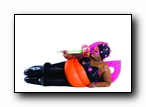
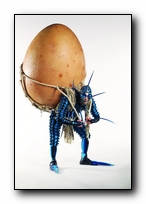
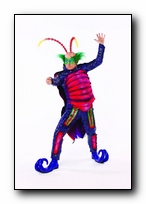
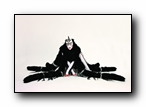
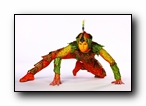
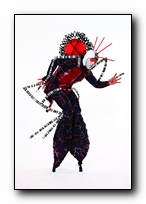
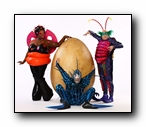
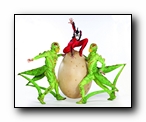
|
|

![]()






